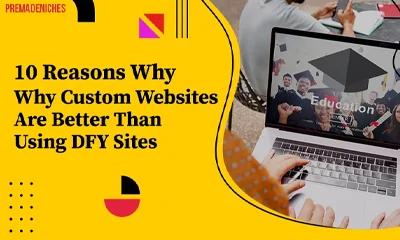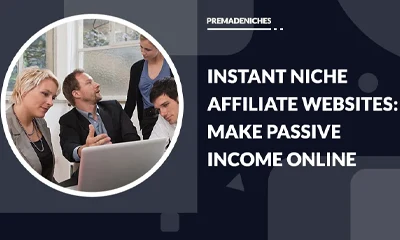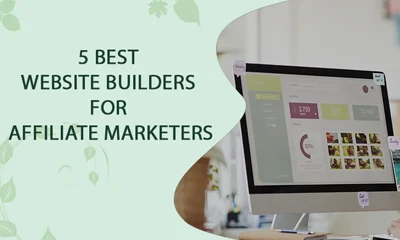You’re standing at a crossroads.
You know, with absolute certainty, that you need a professional website. It’s the non-negotiable hub of your business—your digital storefront, your 24/7 salesperson, your portfolio, and your platform.

Table of Contents
The question isn’t if, but how. And as you stand at this intersection, the paths forward look confusing, each with its own set of promises and pitfalls.
Down one path, you see the faint, flickering light of a thousand YouTube tutorials. This is the DIY route, promising total control and minimal cost, but whispering of late nights and endless frustration.
Down another path, a sleek, glass-and-steel skyscraper looms. This is the agency or professional developer route. It promises a flawless, custom-built masterpiece but is guarded by a gatekeeper demanding a small fortune and months of your time.
But what if there was a third path?
A modern, paved expressway designed specifically for entrepreneurs like you? A path that takes the best of the other two—professional quality and personal control—while leaving the crippling downsides behind.
In this definitive guide, we will walk down all three paths together. We will honestly assess the “DIY Builder” marathon, demystify the “Hired Professional” investment, and finally, illuminate the “Third, Smarter Path” that gets you from idea to launch faster than you ever thought possible. By the end, you won’t be standing at a crossroads anymore; you’ll be confidently striding down the path that’s right for you.
Path #1: The DIY Method (Building From Scratch)
The Do-It-Yourself path is the most common starting point for new entrepreneurs. It’s born from a blend of ambition, budget-consciousness, and the very spirit of entrepreneurship itself: “I can build this.”
And while that drive is admirable, it often overlooks faster alternatives—like ready made turnkey websites that skips the trial-and-error and delivers a polished, ready-to-launch site. Still, the DIY journey is well-documented across the internet, and it generally looks like this.
First, you buy a domain name and a hosting plan. Then, you navigate the hosting control panel to perform a one-click installation of a Content Management System (CMS), which is almost always WordPress, the engine that powers over 43% of the entire internet. Now you have a live, but completely blank, website.
The real “work” begins here. You must now:
- Choose a Theme: You’ll browse through thousands of free and “premium” themes, looking for a design that vaguely matches your vision.
- Install a Page Builder: To get any real control over your layout, you’ll need a drag-and-drop page builder plugin like Elementor or Divi. This is your digital toolkit.
- Find and Vet Plugins: Your site needs more than just pages. You’ll need plugins for contact forms, SEO, image compression, security, backups, and dozens of other functions. Each one needs to be researched, installed, and configured.
- Learn, Learn, Learn: You become a part-time student of everything from graphic design principles and user experience (UX) to CSS code snippets for when the builder just won’t cooperate. You’ll spend hours on YouTube learning how to set margins, create call-to-action buttons, and ensure your site doesn’t look broken on a mobile phone.
- Create or Source All Assets: Every icon, photograph, and line of text must be created or sourced by you.
This is the path of the true digital homesteader, building their corner of the internet with their own two hands.
The Pros (The Allure of Total Control)
To be fair, the DIY path isn’t without its merits. The appeal is strong, and it’s important to acknowledge why so many choose it.
- Lowest Initial Cash Outlay: This is the biggest draw. For the cost of a domain and a year of hosting, you can technically have a website “live.” For a founder bootstrapping on a shoestring budget, this seems like the only option.
- A Valuable Learning Experience: You will undeniably learn a lot. By the end of the process, you’ll have a fundamental understanding of how websites work, from DNS settings to plugin conflicts. These are valuable skills in a digital-first world.
- Absolute Creative Control: Every single pixel is under your command. You can change anything, anytime. There are no designers or developers telling you “that’s not possible.” If you can learn how to do it, you can make it happen.
The Cons (The Brutal Reality of the Time Sink)
While the pros are appealing on the surface, the cons are deep, painful, and often the reason a business fails to launch effectively.
- The Time Vampire: The single most underestimated cost of the DIY method is time. An entrepreneur’s time is their most valuable asset. Every hour spent wrestling with a plugin is an hour not spent on marketing, sales, or product development. A “simple” website can easily consume 80-150 hours of a novice’s time. At even a modest freelance rate of $50/hour, that’s a $4,000-$7,500 project you’ve assigned to yourself.
- The Steep, Treacherous Learning Curve: You’re not just learning one skill; you’re learning to be a designer, a developer, a copywriter, and a systems administrator all at once. This often leads to critical mistakes in security, SEO, and performance that can cripple a site before it even gets its first visitor.
- The Risk of an Amateur Result: This is the harsh truth. Unless you have a natural eye for design and a patient mind for technical details, the end result often “looks” DIY. Misaligned elements, inconsistent fonts, slow-loading images, and poor mobile optimization are dead giveaways that instantly erode a customer’s trust.
- Death by a Thousand Cuts: The “low cost” is an illusion. You soon realize you need the “Pro” version of your page builder, a premium security plugin, a paid backup solution, and a premium form builder. These small monthly and annual subscriptions add up, creating a complex web of recurring costs and licensing headaches.
For the gritty founder with more time than money and a passion for technology, this path can work. But for most entrepreneurs who need to focus on their actual business, the DIY path is a dangerous detour.
Path #2: The Agency/Developer Route (Hiring a Pro)
If the DIY path is the grueling cross-country hike, the agency route is the first-class flight. You hire a professional—either a freelance web developer or a full-service digital agency—to handle everything for you.
The process is structured and professional. It starts with discovery meetings where you discuss your vision, goals, and brand. The agency then provides a detailed proposal, complete with project scope, timelines, and a hefty price tag.
Once you sign on the dotted line, they get to work: creating wireframes, presenting design mockups, writing custom code, and eventually delivering a polished, high-end website.
They manage the entire technical stack, from securing the optimal hosting environment to developing a custom theme and functionality. You are treated as the client, providing feedback at key milestones and waiting for the final, impressive reveal.
The Pros (The Dream Result)
The allure of this path is getting exactly what you want, built to the highest professional standards.
- A Truly Custom, High-End Website: The end product is typically flawless. It’s a bespoke suit tailored perfectly to your brand’s measurements. The design is unique, the functionality is precisely what you asked for, and the quality is undeniable.
- Hands-Off Experience: You are free to focus entirely on your business. You delegate the entire technical and design challenge to a team of experts. Your time is spent on strategy, not on troubleshooting CSS.
- Expertise and Best Practices: A good agency builds sites that are secure, fast, and optimized for search engines from the ground up. You’re buying their years of experience and knowledge of what works.
The Cons (The True Cost of Perfection)
The dream result comes at a dream-crushing price for most new businesses. The barriers to this path are significant and often insurmountable.
- The Astronomical Financial Cost: Professional web design is a premium service. A basic website from a reputable freelancer can easily start at $5,000 to $10,000. A more complex site from a small agency will run you $15,000 to $30,000. Larger projects can easily exceed $50,000. This is simply not a feasible investment for the vast majority of startups and small businesses.
- The Glacially Long Timelines: The bespoke process is not fast. A typical agency project takes anywhere from 8 to 16 weeks, and often longer. Can your business afford to wait three or four months just to get its digital presence online?
- The Golden Handcuffs of Dependency: Once the site is launched, you are often tethered to the developer. Need to change a headline on a service page? Want to add a new testimonial? You’ll need to submit a request and likely pay their hourly maintenance rate. This creates a bottleneck, stifles your ability to be agile, and adds unpredictable ongoing costs. You have a beautiful car, but you don’t have the keys.
The agency path produces a wonderful result, but it’s a luxury that few new ventures can afford in terms of either time or money. It leaves the average entrepreneur stuck between a project that’s too slow and expensive, and one that’s too time-consuming and amateurish.
This is where the third path becomes essential.
Path #3: The Smart Shortcut: The Ready to Use Website Kit
For years, entrepreneurs were told they had only two choices: spend all their time or spend all their money. The digital landscape nowadays has finally delivered a third, far more intelligent option. This is the path that provides the professional quality of an agency project at the speed and affordability of a DIY project.
This is the path of the ready to use website kit.
It’s a revolutionary approach that acts as the perfect bridge between the other two paths. It’s not about building from a blank slate, nor is it about commissioning a multi-thousand-dollar project. It’s about taking a complete, professionally pre-built website foundation and making it your own in a matter of hours, not months.
This solution is designed to eliminate the primary pain points of the other two methods.
Get Agency-Level Quality Without the Agency Price Tag
The biggest failure of the DIY method is that it’s incredibly difficult for a non-designer to achieve a professional look. A ready to use website package solves this by its very nature. It’s built “by” professional designers and developers who understand user experience, conversion design, and branding.
Instead of you trying to piece together a coherent design from a blank page builder, you start with a stunningly designed, fully functional ready to use website template. All the critical design decisions—typography, color theory, spacing, layout, mobile responsiveness—have already been made for you by an expert.
Your job isn’t to be a designer; it’s simply to replace the placeholder content with your own text and images, instantly infusing this professional framework with your unique brand identity.
Launch Instantly Without the DIY Time Sink
Remember the 150-hour time sink of the DIY path? The ready to use website pack reduces that to a single afternoon. The process is radically different. You’re not building; you’re personalizing.
A comprehensive package comes with all the essential components pre-installed and pre-configured. The core theme, the necessary plugins for security and performance, contact forms, and image galleries are all included and working together harmoniously from the moment of installation.
You receive a set of ready to use website files that can be deployed on your hosting account in minutes. Once installed, the site looks exactly like the professional demo you saw. From there, you just log in and start swapping out text and images. What takes a DIYer months of learning and building takes you a few hours of simple, intuitive editing.
Maintain Full Control Without Being a Coder
This is perhaps the most empowering aspect. The agency path often robs you of control, making you dependent on a developer for minor updates. The ready to use website kit gives you back the keys.
Because these packages are built on user-friendly platforms like WordPress with intuitive page builders, you have 100% control over your content. You can edit every page, write new blog posts, change your pricing, and update your portfolio whenever you want, without writing a single line of code or sending a single email to a developer. It combines the complete ownership of the DIY method with the technical peace of mind of the agency method. You get a professionally built engine, but you are firmly in the driver’s seat.
A complete ready to use website package contains everything you need to launch with confidence: the professionally designed template, all the required software, and the simple files to get it all live on your server in one go. It is the definitive shortcut to a professional online presence.
A Head-to-Head Comparison
Let’s visualize the differences. Here is how the three paths stack up against the metrics that matter most to an entrepreneur.
| Metric | Path #1: DIY Method | Path #2: Agency/Developer | Path #3: Ready to Use Website Kit |
|---|---|---|---|
| Average Cost | $150 – $1,000+ (plus hidden time cost) | $8,000 – $30,000+ | $200 – $600 (one-time) |
| Time to Launch | 1 – 4 Months | 2 – 4+ Months | 1 – 2 Days |
| Technical Skill Required | High (or steep learning curve) | None | Low / Basic Computer Skills |
| Design Quality | Low to Medium (User-dependent) | Very High / Professional | Very High / Professional |
| Level of Control | Total (but complex) | Low (Dependent on developer) | Total (and easy to manage) |
As the table clearly shows, the choice for a modern entrepreneur becomes starkly clear. One path demands too much time, another demands too much money, while the third offers an optimal balance of both.
Who Should Choose a Ready to Use Website Package?
While we believe this is the superior path for most, it’s particularly perfect for specific types of founders and creators. See if you recognize yourself in these profiles:
- The Pragmatic Entrepreneur: Your main focus is on getting your business to market and generating revenue. You see your website as a critical tool, not a craft project. You value speed, efficiency, and ROI above all else.
- The Design-Conscious Non-Designer: You have great taste and you know what a professional website should look like, but you don’t have the design or coding skills to build it yourself. You refuse to settle for an amateur-looking site.
- The Bootstrapper with Big Ambitions: You are funding your business yourself, so a $10,000 agency bill is out of the question. However, you are competing in a market where a professional image is non-negotiable. You need to look like a major player on a minor league budget.
- The Freelancer or Consultant: Your website is your digital portfolio and client-attraction tool. You need it online “now” to start landing contracts, and you need to be able to update it easily with new projects and testimonials as your business grows.
- The “I Need it Done Yesterday” Founder: You have an opportunity—a product launch, a PR feature, an investor meeting—and you need a professional online presence to support it immediately. You don’t have months to wait.
If any of these sound like you, then the choice is clear. You are the person for whom the ready to use website package was created.
Making the Smartest Choice for Your Goals
The journey to a live website is no longer has to be a choice between two bad options. You don’t have to sacrifice your precious time on a frustrating DIY learning curve, and you don’t have to drain your startup capital on a high-end agency.
The evolution of the digital landscape has given us a smarter way.
We’ve explored the paths. The DIY route offers control but robs you of time and often results in an unprofessional finish. The Agency route delivers quality but robs you of your budget and agility.
The third path—the smart shortcut—is where modern entrepreneurship lives. The ready to use website kit delivers the undeniable aesthetic and functional quality of a professional build without the crippling cost or timeline. It provides the absolute control of the DIY method without the technical nightmares and steep learning curve.
It is the optimal, undeniable balance of professional quality, record speed, and financial accessibility.
For the aspiring entrepreneur, the small business owner, the freelancer, and the creator ready to make their mark, the decision is no longer a confusing crossroads. It’s a clear, direct, and powerful step forward.
Your professional website is waiting. Don’t build it from scratch—launch it this weekend. Explore our collection of ready to use website packages today and take the smart path to online success.





